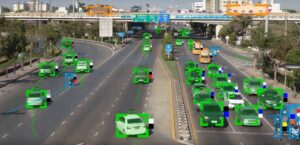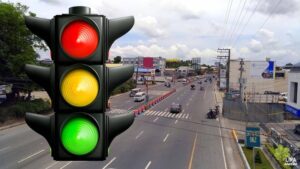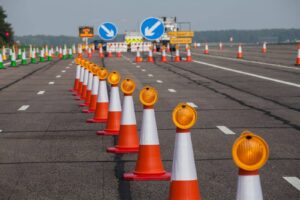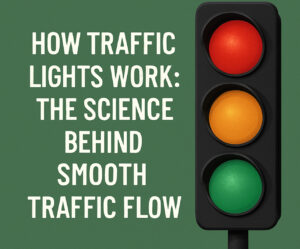Modern cities rely on complex traffic control signals to manage the movement of vehicles and pedestrians efficiently. From the 4 way traffic signal at busy intersections to the more elaborate 5 traffic signal configurations in major metro areas, these systems are essential to ensuring road safety and flow. But what’s fascinating is how differently these systems are implemented across the world. The United States, European Union, and Asia each have their own distinct approaches, influenced by history, technology, policy, and culture. Know more..
The Basics of Traffic Signal Systems
Before diving into the regional differences, it’s important to understand the basic framework of traffic control signals. These include:
- 4 way traffic signal systems typically found at intersections with four roads, providing clear indications for each direction.
- 5 traffic signal setups, which may include additional lanes for turning or bus priority signals.
- Pedestrian signals with visual countdowns or audible cues.
While the core components (red, yellow, green lights) are consistent globally, the rules, timing, and added features vary greatly depending on location.
United States: Uniformity with Local Flexibility
The U.S. uses the Manual on Uniform Traffic Control Devices (MUTCD) as the national standard for all traffic control signals. This ensures a consistent experience across states while still allowing local traffic engineers some room to adapt signals based on community needs.
Key Characteristics:
- The 4 way traffic signal is the standard intersection setup in urban and suburban areas.
- Additional arrows or light indicators are used in 5 traffic signal setups, especially in areas with heavy left or right-turn traffic.
- Pedestrian buttons, audible signals, and countdown timers are widely used.
In most cities, yellow lights last 3 to 6 seconds, and red-light cameras are common in high-risk areas.
Innovations:
- Use of AI to adapt signal timing based on real-time traffic data.
- Increasing adoption of connected signal systems for autonomous vehicle integration.
European Union: Emphasis on Safety and Environment
The EU has a more decentralized traffic management approach, with each member state maintaining its own guidelines, though there is an overarching goal of harmonization.
Key Characteristics:
- A 4 way traffic signal may be augmented with cyclist-specific signals in cities like Amsterdam or Copenhagen.
- A 5 traffic signal system in EU cities often includes priority signals for trams or buses.
- Signals are often placed at eye level for drivers and at mid-crosswalk height for pedestrians.
Europe is also more likely to integrate eco-friendly timing patterns that reduce idling time to cut down on emissions.
Innovations:
- Sensor-based traffic control signals that reduce stop-and-go driving.
- Widespread use of LED and solar-powered signals.
- Digital signage integrated into signal posts.
Asia: High Density, High Tech
Asia presents a wide range of traffic management styles, from the disciplined signals of Japan to the dynamic systems found in cities like Seoul, Singapore, and Shanghai.
Key Characteristics:
- The 4 way traffic signal is just the starting point. Many intersections in megacities handle six or more roads.
- The 5 traffic signal systems often include turn lanes, transit signal priority, and even pedestrian-only crossing phases (scramble crossings).
- Timers and large countdown displays are very common.
Asian countries often lead in signal automation. Cities use traffic cameras, real-time AI algorithms, and dense sensor grids to manage huge volumes of cars and people.
Innovations:
- Integration of mobile apps that sync with traffic control signals.
- Signals that adjust in real-time based on volume, weather, and even event-based surges (e.g., concerts, parades).
- Use of facial recognition and behavioral prediction to enhance pedestrian safety.
Signal Design and Color Standards
While red, yellow, and green are nearly universal, their usage and display positioning can vary:
- In the U.S., red is always on top or to the left.
- In some parts of Asia, particularly Japan, green lights may appear blue due to linguistic and cultural history.
- The EU frequently uses symbolic icons for pedestrians and cyclists alongside colors.
The 4 way traffic signal format remains universal, but 5 traffic signal arrangements show more regional creativity—particularly when accounting for multiple modes of transit like scooters, buses, and bikes.
Compliance and Enforcement
Enforcement of traffic control signals also differs significantly:
- In the U.S., cameras and police patrols handle most violations.
- The EU relies more on speed and signal enforcement cameras.
- In many Asian cities, enforcement is deeply integrated with technology, using automatic license plate recognition and real-time violation notices via mobile apps.
Cultural Differences That Influence Design
- In the U.S., there’s a strong focus on vehicle priority, although pedestrian safety campaigns are gaining ground.
- EU countries emphasize vulnerable road user protection—bike lanes and pedestrian paths are built into signal logic.
- In Asia, space constraints lead to vertical infrastructure solutions and multi-layered 5 traffic signal configurations.
These cultural elements influence how signals are timed, positioned, and prioritized.
Challenges and Trends
Regardless of location, all regions face similar challenges:
- Increasing congestion
- Integration with smart city systems
- Adapting to electric and autonomous vehicles
- Ensuring accessibility for all users
The future of traffic control signals lies in:
- AI-driven adaptive timing
- Cloud-based control centers
- Sustainability through solar and low-energy lighting
- Enhanced interfaces for multi-modal traffic (bikes, e-scooters, pedestrians, AVs)
The Future: Global Harmonization or Hyper-Localization?
While technology is helping bridge the gap, it’s unlikely that a single global standard will emerge soon. Instead, we’ll likely see:
- More cross-border collaboration (EU to Asia, US to EU, etc.)
- Open data platforms for traffic analysis
- Interoperable systems for multinational traffic management firms
As cities become smarter, the importance of customizing systems to local needs becomes clearer. The 4 way traffic signal might look the same worldwide, but how it operates can be vastly different depending on cultural expectations and tech capabilities.
Conclusion
Whether you’re driving through downtown Chicago, biking across Berlin, or walking in downtown Tokyo, traffic control signals, 4 way traffic signal, and 5 traffic signal systems guide your journey. Despite their visual similarities, these systems reveal deep insights into each region’s values, priorities, and technological readiness.
Understanding these differences is more than a curiosity—it’s essential to building smarter, safer, and more efficient cities. As global urbanization accelerates, harmonizing the science of traffic with the art of local adaptation will define the next generation of signal standards.
The evolution of traffic control signals is not just about who goes and who stops—it’s about how the world moves.





